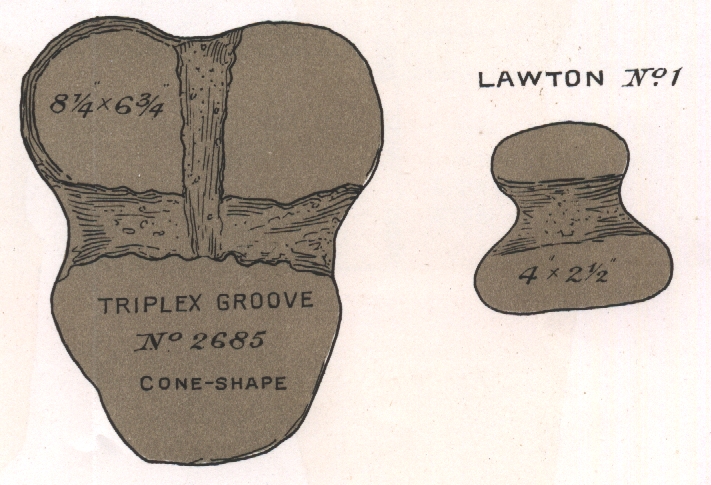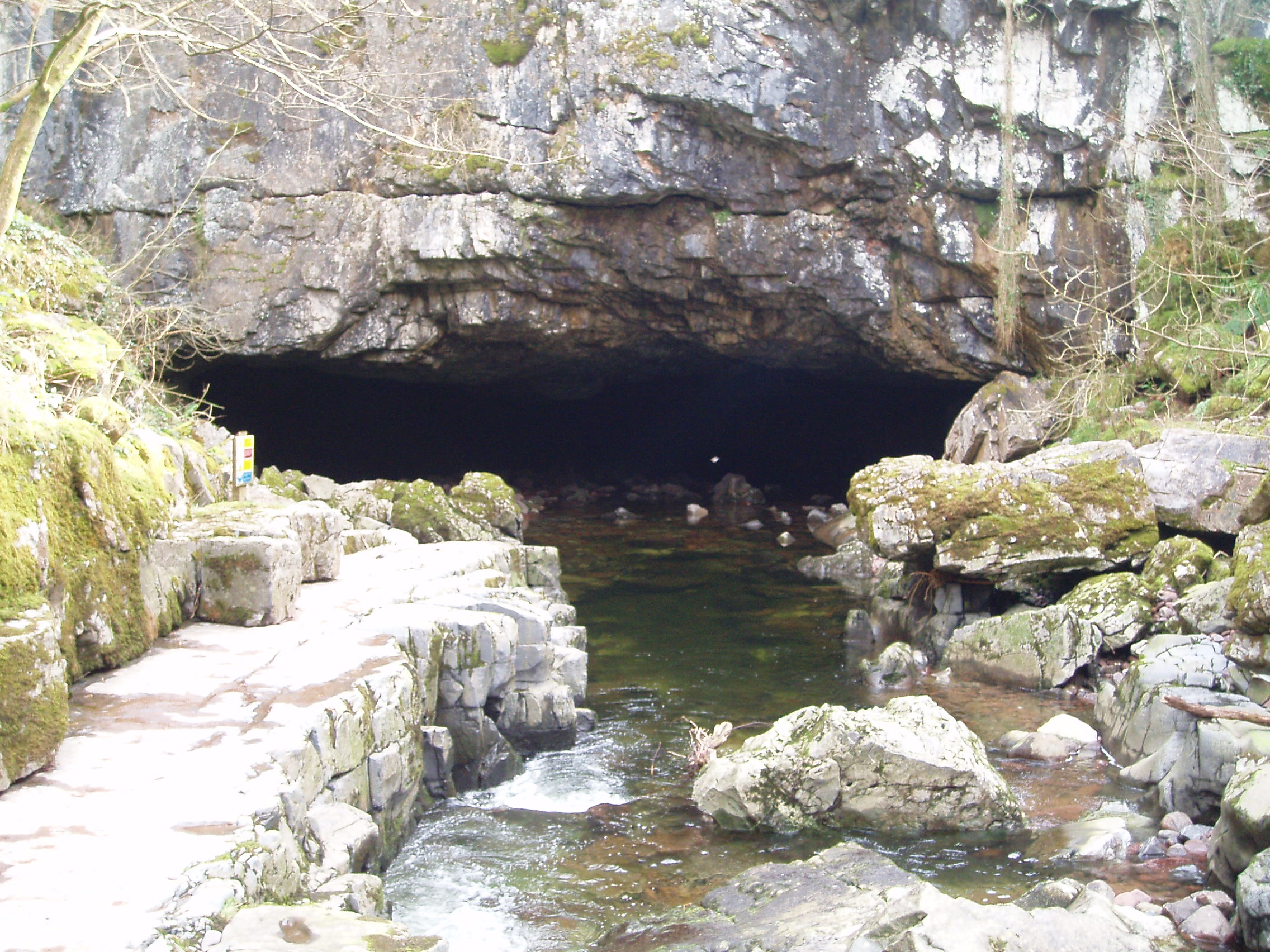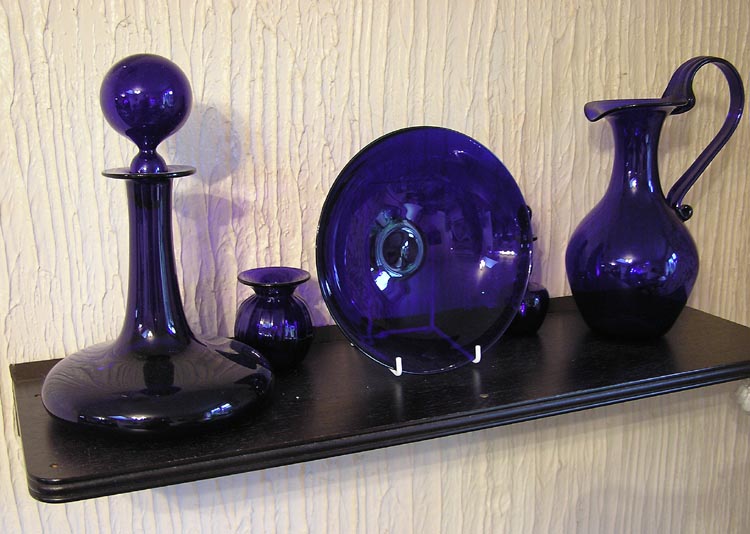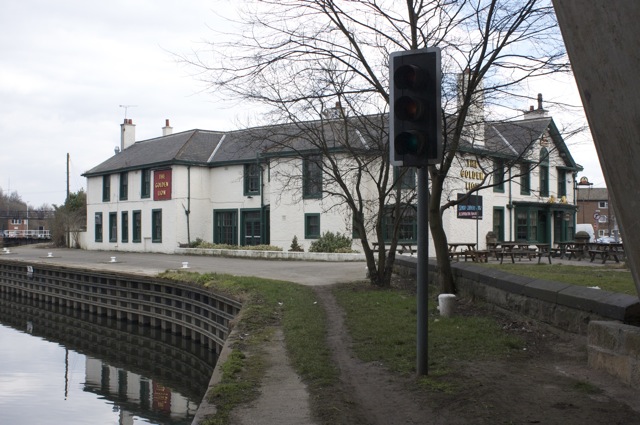|
Alderley Edge Mines
The Alderley Edge Mines are located on the escarpment in Alderley Edge, Cheshire. Archaeological evidence indicates that copper mining took place here during Roman times and the Bronze Age, and written records show that mining continued here from the 1690s up to the 1920s. The site was the location of the Alderley Edge Landscape Project and the Pot Shaft Hoard. Many of the mines are owned by the National Trust. The Derbyshire Caving Club have leased the access rights, and they continue to explore and search for areas of mining that have been closed for centuries. Location and geology The mines are located in a horst block at Alderley Edge, Cheshire. The area is primarily of Triassic new red sandstone of the pebble beds formation. The youngest beds (members) are known locally as the Nether Alderley and West Mine sandstones followed by the Wood Mine Conglomerates, Beacon Lodge Sandstones and Engine Vein Conglomerates. These latter members make up the Helsby Sandstone Formati ... [...More Info...] [...Related Items...] OR: [Wikipedia] [Google] [Baidu] |
Alderley Edge
Alderley Edge is a village and civil parish in Cheshire, England. In 2011, it had a population of 4,780. Alderley Edge is northwest of Macclesfield and south of Manchester, at the base of a steep and thickly wooded sandstone escarpment, Alderley Edge, which is the area's chief topographical feature and overlooks the Cheshire Plain. Alderley Edge is known for its affluence and expensive houses, falling inside Cheshire's Golden Triangle. Alderley Edge has a selection of cafes and designer shops and has attracted numerous Premier League footballers, actors and multi-millionaire businesspeople. It is one of the most expensive and sought-after places to live in the UK outside central London. History The area around Alderley Edge provides proof of occupation since the Mesolithic period with flint implements being found along the line of the sandstone outcrop. Evidence of copper mining in the Bronze Age has also been found to the south of the area. In 1995 members of the ... [...More Info...] [...Related Items...] OR: [Wikipedia] [Google] [Baidu] |
Wallerfangen
Wallerfangen is a municipality of Saarlouis district, Saarland, Germany. Located west of Saarlouis and along the French border, it is the seat of the villages of Ittersdorf, Ihn, Leidingen, St. Barbara, Kerlingen, Gisingen, Rammelfangen, Oberlimberg, Bedersdorf, and Düren. History Formerly called Walderfinga, it was established by the Duchy of Lorraine, and belonged to the Duchy until the Napoleonic Wars in the late 18th century, at which time it came under French control. Up until 1687, Wallerfangen possessed town privileges. In that year, the fortifications and most of the buildings were destroyed and the inhabitants were moved to the newly found town-fortress of Saarlouis. In 1815, under the Treaty of Paris, Prussia assumed control of the area. For all intents and purposes, it remained in the possession of the German Federation of States until 1919. The Treaty of Versailles created an independent and autonomous territory of Saargebiet, administered by France and the Leag ... [...More Info...] [...Related Items...] OR: [Wikipedia] [Google] [Baidu] |
West Mine
West or Occident is one of the four cardinal directions or points of the compass. It is the opposite direction from east and is the direction in which the Sun sets on the Earth. Etymology The word "west" is a Germanic word passed into some Romance languages (''ouest'' in French, ''oest'' in Catalan, ''ovest'' in Italian, ''oeste'' in Spanish and Portuguese). As in other languages, the word formation stems from the fact that west is the direction of the setting sun in the evening: 'west' derives from the Indo-European root ''*wes'' reduced from ''*wes-pero'' 'evening, night', cognate with Ancient Greek ἕσπερος hesperos 'evening; evening star; western' and Latin vesper 'evening; west'. Examples of the same formation in other languages include Latin occidens 'west' from occidō 'to go down, to set' and Hebrew מַעֲרָב maarav 'west' from עֶרֶב erev 'evening'. Navigation To go west using a compass for navigation (in a place where magnetic north is the same dire ... [...More Info...] [...Related Items...] OR: [Wikipedia] [Google] [Baidu] |
List Of UK Caving Fatalities
This is a list of recreational caving fatalities in the United Kingdom. It includes all verified deaths associated with the exploration of natural caves and disused mines in the modern era (post 1880). Deaths involving members of the general public who may have slipped down a shaft, or wandered into a cave without being aware of the risks, have been excluded. Caving cannot be considered a particularly dangerous pastime. In 2018, there were up to 4,000 regular cavers in the UK, and about 70,000 people who went on instructor-led courses into caves in the Yorkshire Dales, but there were no fatalities. List of fatalities The following is a list of the 136 identified recorded fatalities associated with recreational caving in the UK. The main causes of death have been drowning when cave diving, drowning as the result of flooding or negotiating deep water, injuries incurred from falling from a height, and injuries incurred as the result of rock falls. In ten cases the bodies have no ... [...More Info...] [...Related Items...] OR: [Wikipedia] [Google] [Baidu] |
First World War
World War I (28 July 1914 11 November 1918), often abbreviated as WWI, was one of the deadliest global conflicts in history. Belligerents included much of Europe, the Russian Empire, the United States, and the Ottoman Empire, with fighting occurring throughout Europe, the Middle East, Africa, the Pacific, and parts of Asia. An estimated 9 million soldiers were killed in combat, plus another 23 million wounded, while 5 million civilians died as a result of military action, hunger, and disease. Millions more died in genocides within the Ottoman Empire and in the 1918 influenza pandemic, which was exacerbated by the movement of combatants during the war. Prior to 1914, the European great powers were divided between the Triple Entente (comprising France, Russia, and Britain) and the Triple Alliance (containing Germany, Austria-Hungary, and Italy). Tensions in the Balkans came to a head on 28 June 1914, following the assassination of Archduke Franz Ferdina ... [...More Info...] [...Related Items...] OR: [Wikipedia] [Google] [Baidu] |
Glass Tax
The glass tax was introduced in Great Britain in 1746, during the reign of King George II. Originally, these acts taxed initially raw materials used for glass making. Glass was at that time sold by weight, and manufacturers responded by producing smaller, more highly decorated objects, often with hollow stems, known today as "Excise glasses". The impact of these taxes was that many glassworks had to move their businesses to bordering countries, most frequently to Ireland. In 1780, the government granted Ireland free trade in glass without taxation, resulting in the establishment of glassworks in Cork and Waterford. After the campaigns against those acts, glass tax was shifted in 1811 to all products made from glass, for examples green glass bottles, windows and flint glass. The heavy decorative glass objects and large windows became the symbol of wealth in this time period. This also meant that only the very wealthy could afford green houses and the fruit grown in them. In 1825 the ... [...More Info...] [...Related Items...] OR: [Wikipedia] [Google] [Baidu] |
Cobalt Glass
Cobalt glass—known as "smalt" when ground as a pigment—is a deep blue coloured glass prepared by including a cobalt compound, typically cobalt oxide or cobalt carbonate, in a glass melt. Cobalt is a very intense colouring agent and very little is required to show a noticeable amount of colour. Cobalt glass plates are used as an optical filter in flame tests to filter out the undesired strong yellow light emitted by traces of sodium, and expand the ability to see violet and blue hues, similar to didymium glass. Moderately ground cobalt glass (potassium cobalt silicate)—called "smalt"—has been historically important as a pigment in glassmaking, painting, pottery, for surface decoration of other types of glass and ceramics, and other media. The long history of its manufacture and use has been described comprehensively. Cobalt aluminate, also known as "cobalt blue", can be used in a similar way. Cobalt glass such as Bristol blue glass is appreciated for its attractive colour ... [...More Info...] [...Related Items...] OR: [Wikipedia] [Google] [Baidu] |
Ferrybridge
Ferrybridge is a village in West Yorkshire, England. Ferrybridge lies at a historically important crossing of the River Aire which borders the North Yorkshire village of Brotherton. It is linked to other communities by the A1, which follows the route of the Great North Road. The village falls within the Knottingley ward of Wakefield City Council. The origin of the place-name is from Old Norse and means ''bridge by the ferry''. It appears as ''Ferie'' in the Domesday Book of 1086 and as ''Ferybrig'' in 1198. Geography and geology Geologically, Ferrybridge and Knottingley are located on rich soil, over a bed of Magnesian Limestone. The area is close to junctions of the M62 and A1(M) motorways; as well as junctions on the rail network, including northward to York, south to Pontefract (and Rotherham), west to both Wakefield and Leeds, east to Goole and south-east to the East Coast Main Line; the River Aire meets the Aire and Calder navigation close to the east of the town. Th ... [...More Info...] [...Related Items...] OR: [Wikipedia] [Google] [Baidu] |
John Stanley, 1st Baron Stanley Of Alderley
John Thomas Stanley, 1st Baron Stanley of Alderley (26 November 1766 – 23 October 1850), known as Sir John Stanley, 7th Baronet, from 1807 to 1839, was a British peer and politician. Life Stanley was the son of Sir John Thomas Stanley FRSE (1735–1827), 6th Baronet and elder brother of Edward Stanley, the Bishop of Norwich. He succeeded in the baronetcy and to the family seat at Alderley Park in Cheshire on his father's death in 1807. This branch of the Stanley family descended from the Hon. Sir John Stanley, third son of Thomas Stanley, 1st Baron Stanley (whose eldest son Thomas was created Earl of Derby in 1485). His mother was Margaret Owen, heiress of the Penrhos estate on Anglesey and he was appointed High Sheriff of Anglesey for 1809. He was elected to the House of Commons for Wootton Bassett in 1790, a seat he held until 1796. He was also elected a Fellow of the Royal Society in 1790. In 1839 Stanley was raised to the peerage as Baron Stanley of Alderley, in the Coun ... [...More Info...] [...Related Items...] OR: [Wikipedia] [Google] [Baidu] |
Napoleonic Blockade
The Continental Blockade (), or Continental System, was a large-scale embargo against British trade by Napoleon Bonaparte against the British Empire from 21 November 1806 until 11 April 1814, during the Napoleonic Wars. Napoleon issued the Berlin Decree on 21 November 1806 in response to the naval blockade of the French coasts enacted by the British government on 16 May 1806.Jean Tulard, ''Napoléon'', Hachette, 2008, p. 207 The embargo was applied intermittently, ending on 11 April 1814 after Napoleon's first abdication. Aside from subduing Britain, the blockade was also intended to establish French industrial and commercial hegemony in Europe. Within the French Empire, the newly acquired territories and client states were subordinate to France itself, as there was a unified market within France (no internal barriers or tariffs) while economic distortions were maintained on the borders of the new territories. The Berlin Decree forbade the import of British goods into any Europe ... [...More Info...] [...Related Items...] OR: [Wikipedia] [Google] [Baidu] |
Cobalt
Cobalt is a chemical element with the symbol Co and atomic number 27. As with nickel, cobalt is found in the Earth's crust only in a chemically combined form, save for small deposits found in alloys of natural meteoric iron. The free element, produced by reductive smelting, is a hard, lustrous, silver-gray metal. Cobalt-based blue pigments ( cobalt blue) have been used since ancient times for jewelry and paints, and to impart a distinctive blue tint to glass, but the color was for a long time thought to be due to the known metal bismuth. Miners had long used the name ''kobold ore'' (German for ''goblin ore'') for some of the blue-pigment-producing minerals; they were so named because they were poor in known metals, and gave poisonous arsenic-containing fumes when smelted. In 1735, such ores were found to be reducible to a new metal (the first discovered since ancient times), and this was ultimately named for the ''kobold''. Today, some cobalt is produced specifically from one of ... [...More Info...] [...Related Items...] OR: [Wikipedia] [Google] [Baidu] |
Visitors Resize
Visitor, in English and Welsh law, is an academic or ecclesiastical title. Visitor or Visitors may also refer to: Geography * Visitor (mountain), a mountain in eastern Montenegro * Lake Visitor, a mountain lake in eastern Montenegro Literature * ''Visitor'' (novel), a novel by C. J. Cherryh * ''The Visitor'' (Applegate novel), an ''Animorphs'' novel by K. A. Applegate * ''The Visitors'' (novel), a novel by Clifford D. Simak * ''Visitors'' (Card novel), a novel by Orson Scott Card * ''The Visitor'' (Child novel) * ''Visitors'' (''Buffy'' novel) * ''The Visitors'' (play), a play by Joe Orton * ''Visitors'' (play), a play by Barney Norris * The Visitor (short story), a 1965 short story by Roald Dahl * ''The Visitor'', a novel by Sheri S. Tepper *''The Visitor'', a novella by Maeve Brennan * ''The Visitor'', a Valiant Comics title Film * ''The Visitor'' (1974 film), an Italian comedy film * ''The Visitor'' (1979 film), a thriller by Giulio Paradisi * ''The Visitor'' (200 ... [...More Info...] [...Related Items...] OR: [Wikipedia] [Google] [Baidu] |






